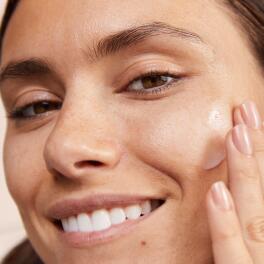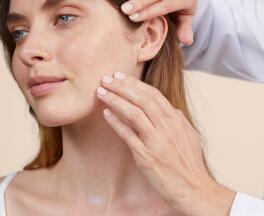EXPERT’S NOTEBOOK
Whether your skin is naturally dry, combination, normal or oily, external aggressors can cause it to become dehydrated.
The skin is the body’s first line of attack from the external environment, such as physical aggressors (shocks, temperature variations, wind, etc.) or chemical aggressors (surfactants, irritants, etc.).
Dehydrated skin looks dull, feels rough, flaky, and is sometimes lined or cracked.
While the entire human body, including the dermis, is made up of 60% water, this is not the case for the epidermis, whose surface layer acts like an interface between the very humid internal environment and the much drier external air. The epidermis contains 20 to 30% water, and its most superficial layer, the stratum corneum, 10 to 20%. This stratum corneum has a specific structure, often compared to a brick wall (corneocytes) and cement (intercellular lipids), whose role is to prevent water from evaporating from the body.
Some skin types are naturally better hydrated, or less dry, than others. Dry skin, whether it is simple xerosis, xerosis as a result of atopic dermatitis, or ichthyosis, contains much less water than normal skin. This dryness is due to abnormalities in lipid metabolism (ceramides), protein metabolism (proteases, filaggrin) or even impaired epidermal differentiation.
The two main causes of dry skin are external or internal.
External causes:
- Climatic: wind, cold, excessive sunshine, lack of humidity in the atmosphere (air-conditioning, heating).
- Chemical: products with too much detergent, topical medical treatments, unsuitable cosmetics.
- Mechanical: shaving and waxing.
- Physiological: skin ageing.
- Pathological: skin conditions affecting the skin barrier.
Yes, but not just water: we cannot rehydrate the superficial layer of the epidermis simply by drinking water or by wetting the skin. Lipids (fats) are also essential for retaining water.
Yes, this is one of the causes of dry skin. Sun exposure is an attack (burn) in which the epidermis reacts by producing more pigment (a tan) and thickening. The dryness observed is temporary due to increased water loss.
Yes. Some domestic water supplies have a high limescale content: this is known as “ hard ” water. They can increase the drying effect of skincare products. You can soften water by using special devices or compensate for hard water by using ultra-rich products.
Dehydrated skin is dull and tired. It feels rough with dehydration lines. Skin is fragile and lacks suppleness.
There are two reasons for this:
a lack of water with less than 10% water in the outermost layer of the skin (stratum corneum) and an impaired barrier function.
The aim is to nourish and hydrate the skin by limiting damage and irritation. When showering, avoid soap and opt for ultra-rich cleansers or gels enriched with protective and hydrating ingredients. Use emollient creams to hydrate and nourish the skin, and ensure the epidermis is intact, which is essential for its protective barrier function. Applying these emollients regularly is important. Ideally, every day.

Its fluid, non-greasy and delicately-scented formula allows for quick application to make everyday life easier for the whole family.

NEWSLETTER
We’re always here for your skin!
All our tips for taking care of your skin day to day.

NEWSLETTER
Which skin care routine should you adopt?
Identify what it really needs with the help of our experts and discover the most suitable skin care routine for you.